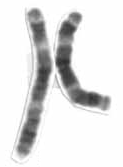| Microthamniaceae | |
|---|---|
 | |
| Microthamnion sp. | |
| Scientific classification | |
| (unranked): | Viridiplantae |
| Division: | Chlorophyta |
| Class: | Trebouxiophyceae |
| Order: | Microthamniales M.Melkonian |
| Family: | Microthamniaceae G.S.West |
| Genera | |
Microthamniaceae is a family of green algae in the class Trebouxiophyceae. [1] It is the only family in the order Microthamniales.







